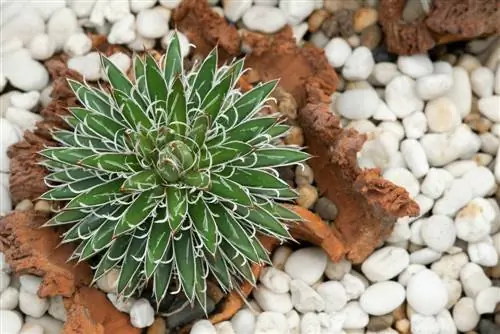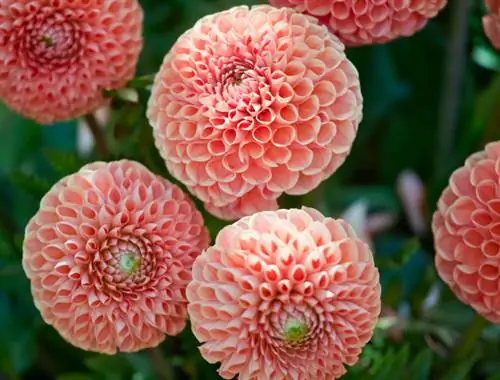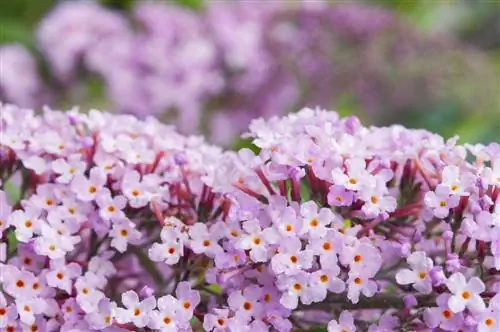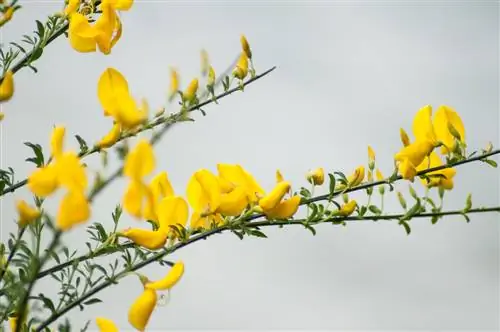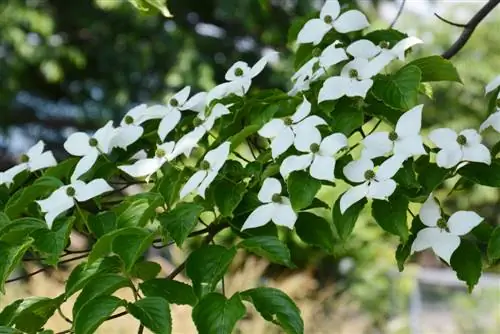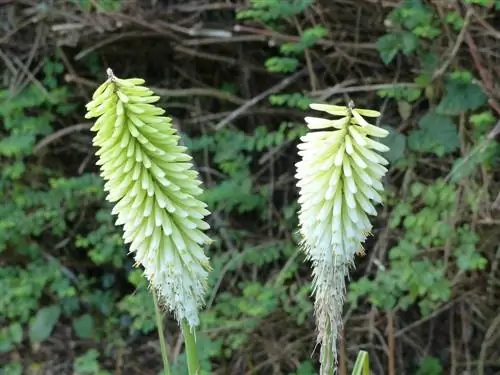- Author admin [email protected].
- Public 2023-12-16 16:46.
- Last modified 2025-01-23 11:22.
Due to their modest size and compact root system, smaller agave species are ideal for growing in containers. They rarely need to be watered and thrive in summer, even in the heat. Which small agaves are particularly recommended?
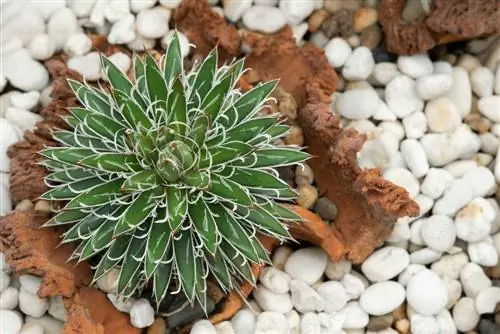
Which small agave species are particularly recommended?
Recommended small agave species are the Agave victoria-reginae 'Compacta', blackthorn agave, King Ferdinand agave, Agave Lophantha, Agave schidigera, artichoke agave and two-flowered agave. They delight with their unusual growth forms, special colors and striking leaf structures.
Which small agaves are particularly beautifully colored?
These varieties, for example, have particularly pretty colors:
- Agave victoria-reginae 'Compacta': up to 30 centimeters wide, dark green leaves with bright white edges, native to Mexico
- Blackthorn agave (Agave macroacantha): up to 40 centimeters high and wide, powder blue leaves and maroon leaf tips, native to southern Mexico, forms numerous offshoots
- King Ferdinand Agave (Agave nickelsiae syn. Agave ferdinandi regis): similar to Agave victoria-reginae with dark green, white-edged leaves, but slightly larger up to 60 centimeters high and wide
- Agave Lophantha: rich green leaves, often with wide yellow stripes, variety 'Quadricolor' with yellow leaf edges, up to 60 centimeters high and wide
Are there small agaves with unusual growth or leaves?
Small agaves that are more noticeable because of their unusual growth habits or the shape of their leaves are, for example:
- Agave schidigera: white markings on the leaves, light leaf edges with numerous, curled fibers, up to 30 centimeters high and up to 60 centimeters wide
- Artichoke agave (Agave parryi var. truncata): similar to an artichoke with very wide, blue-gray leaves, also chestnut-brown spines, up to 90 centimeters high and wide
- Two-flowered agave ((Agave geminiflora): very fine, thin and dense leaves with a bright green color, up to 90 centimeters high and wide
How to plant small agaves?
Start by choosing a pot with a drainage hole that is slightly larger than the root ball. Agaves thrive better when their roots are somewhat crowded. All agaves also require a well-drained substrate, which can be made from one part compost, one part sand and one part perlite or pumice. But you can also use commercially available cactus soil (€12.00 on Amazon). Agaves should be repotted about every three years, but at the latest when their roots have little soil left.
How do you properly care for small agaves?
Water the agaves when the top two-thirds of the substrate has dried out. Water deeply until the water runs out of the bottom of the pot. In summer, when temperatures rise above 38 degrees Celsius, you should water weekly. In winter, however, you should be very sparing with watering and only water very little or not at all. Fertilize during the growing season, i.e. H. in late spring and summer, once a month with a cactus fertilizer.
Tip
Queen of Agaves: Queen Victoria Agave
The Agave victoriae-reginae is considered one of the most beautiful agave species with its slow-growing, spherical rosette of smooth, thornless, thick, dark green leaves with white edges and a small terminal spine. The species only grows to around 50 centimeters high and just as wide.

